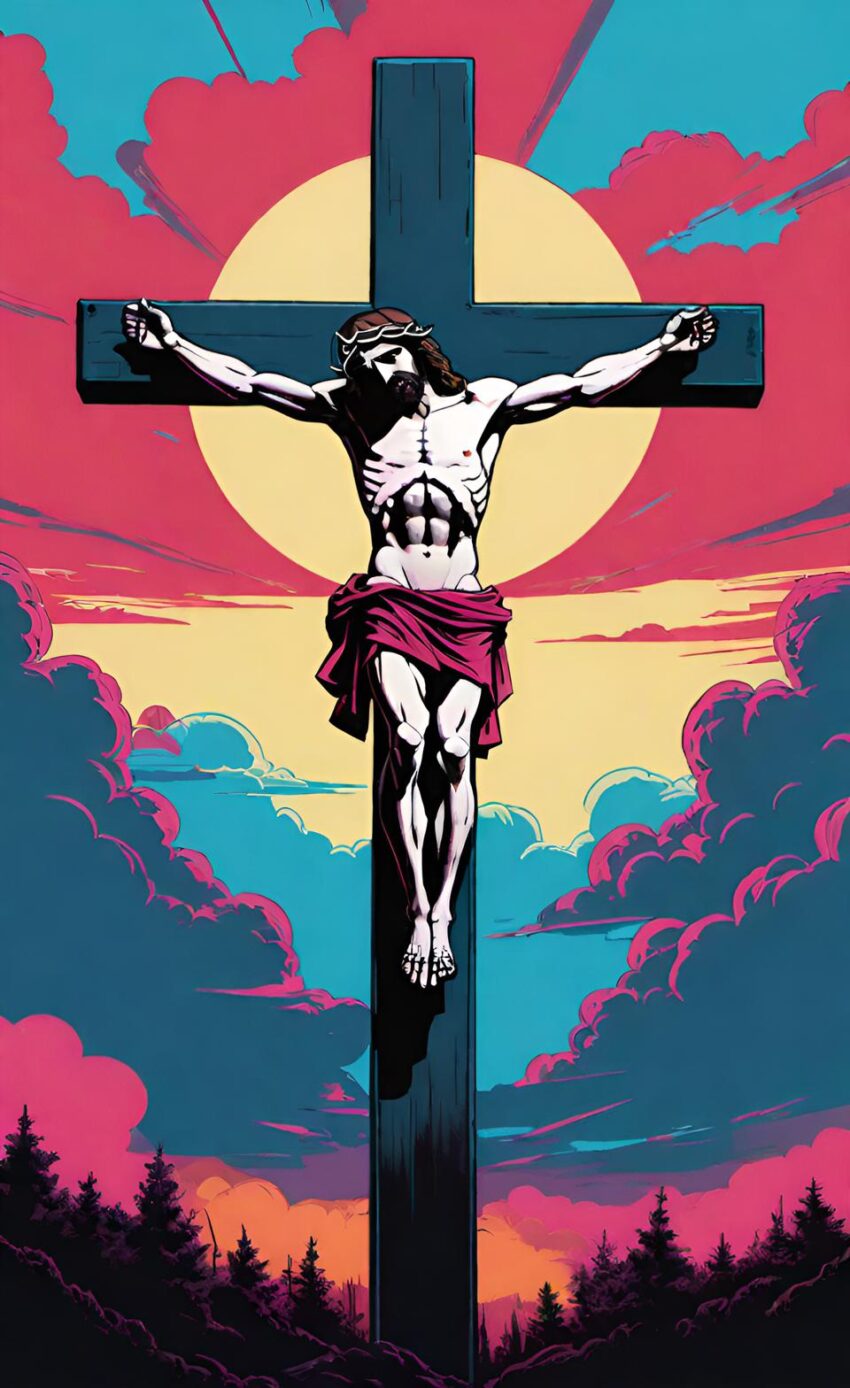I watched The Passion of the Christ for the first time ever on Good Friday this year. I think it’s worth watching and many parts are very well done but I do think Mel Gibson went too far with the blood, the gore and the violence, which apparently has been a recurring criticism of the film over the years.
According to a Catholic scholar friend, the depictions of violence draw heavily from the visions of Anne Catherine Emmerich, a German mystic. And while I’m loath to cite Wikipedia, for the sake of convenience, I’ll offer this from the Wikipedia page on a book detailing Emmerich’s visions:
In 1812, Emmerich was bedridden with a debilitating illness. During this time, she began to have visions of the Passion of Jesus. She described these visions in great detail to her assistant, Clemens Brentano, who later wrote them down…
A website contains the complete visions of Emmerich. The visions are painstakingly detailed. To wit, consider the scourging ordered by Pontius Pilate, described below:
Jesus trembled and shuddered as he stood before the pillar, and took off his garments as quickly as he could, but his hands were bloody and swollen. The only return he made when his brutal executioners struck and abused him was, to pray for them in the most touching manner: he turned his face once towards his Mother, who was standing overcome with grief; this look quite unnerved her: she fainted, and would have fallen, had not the holy women who were there supported her.
Jesus put his arms round the pillar, and when his hands were thus raised, the archers fastened them to the iron ring which was at the top of the pillar; they then dragged his arms to such a height that his feet, which were tightly bound to the base of the pillar, scarcely touched the ground. Thus was the Holy of Holies violently stretched, without a particle of clothing, on a pillar used for the punishment of the greatest criminals; and then did two furious ruffians who were thirsting for his blood begin in the most barbarous manner to scourge his sacred body from head to foot. The whips or scourges which they first made use of appeared to me to be made of a species of flexible
white wood, but perhaps they were composed of the sinews of the ox, or of strips of leather.Our loving Lord, the Son of God, true God and true Man, writhed as a worm under the blows of these barbarians; his mild but deep groans might be heard from afar; they resounded through the air, forming a kind of touching accompaniment to the hissing of the instruments of torture. These groans resembled rather a touching cry of prayer and supplication, than moans of anguish.
I think it’s fair to say that, while the above passage isn’t subtle or mild, Mel Gibson’s interpretation of it is wildly more gruesome. However, the following passage lends more credence to Gibson’s interpretation:
Two fresh executioners took the places of the last mentioned, who were beginning to flag; their scourges were composed of small chains, or straps covered with iron hooks, which penetrated to the bone, and tore off large pieces of flesh at every blow. What word, alas! could describe this terrible—this heartrending scene!
The cruelty of these barbarians was nevertheless not yet satiated; they untied Jesus, and again fastened him up with his back turned towards the pillar. As he was totally unable to support himself in an upright position, they passed cords round his waist, under his arms, and above his knees, and having bound his hands tightly into the rings which were placed at the upper part of the pillar, they recommenced scourging him with even greater fury than before; and one among them struck him constantly on the face with a new rod. The body of our Lord was perfectly torn to shreds,—it was but one wound. He looked at his torturers with his eyes filled with blood; as if entreating mercy; but their brutality appeared to increase, and his moans each moment became more feeble.
So after some brief investigation online, it appears that Gibson’s portrayal of the barbarism seems quite true to the visions of Emmerich. However, as a viewer, I tune out when too much blood surfaces in movies. I don’t really care about historical accuracy in this narrow context. I’m fine with violence portrayed in more subtle ways, e.g., silhouetted acts, implied acts, etc. Some might say “the violence in Passion of the Christ is the whole point!” to which I say “other methods might be more effective.”
For me, the film’s subtler moments in Gethsemane are far more interesting. And the casting in general is superb. Monica Bellucci as Mary Magdalene? So perfect that I didn’t even realize it was her until I googled some film details afterwards.


The portrayals of Satan are effective also. The scene embedded below is moderately disturbing, with Satan taunting Jesus by caring for his “child” while the Son of God seems left for dead by his omnipotent father.
Satan’s answer to the problem of suffering is Death. Death and vengeance. Retribution. It is unjust that you were brought into this world and every bad thing that ever happened to you you did not deserve.God must pay for it. Those who did it must pay for it. The only purpose of existence is to seek power such that you can tear down all that is and leave everything as it was before God made it. Formless. And Void. Deconstruction. The Luciferian project. Is he right? Up to you.
The film leaves us with much to process. The story of Jesus has a lot of signal that can be hard to parse — God made himself vulnerable through Christ and society proceeded to murder him. Gibson forces us to confront what this means, in practice.
In reality.
